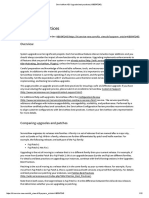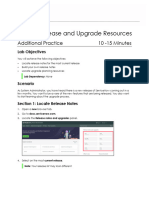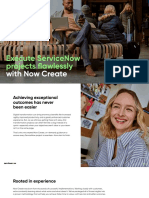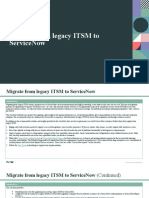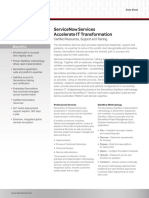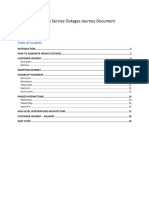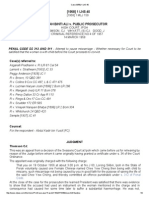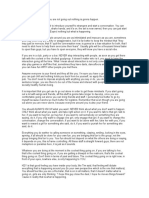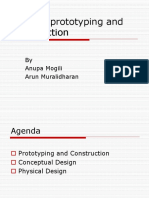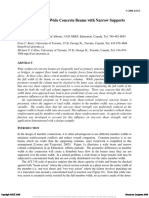SUCCESS WORKBOOK
Perform
ServiceNow
upgrades
efficiently and
more effectively
Developed by the ServiceNow Best Practice
Center of Excellence
February 2022
� SUCCESS WORKBOOK
Why is it important to upgrade your
instance/s?
Staying current with the Now Platform® lets you take adv antage of the new
features and functionality designed to help you achiev e your business
outcomes. By keeping your Serv iceNow env ironment up to date, you maximize
your inv estment, reduce the risk of encountering issues that hav e already been
resolv ed, and av oid the issues inherent when running on an unsupported
release.
Follow the steps outlined in this workbook to perform upgrades quickly and
effectively.
Why should I invest in upgrades?
Regular upgrades bring v alue to your organization, including:
• Stay current with the latest ServiceNow features and functionality.
• Keep your instance healthy.
• Remain cov ered by Serv iceNow technical support.
What will this workbook help me do?
This workbook will prepare you to:
• Plan for an upgrade.
• Create a repeatable process for future upgrades.
• Create test plans BEFORE you upgrade to implement standardize testing.
• Minimize the time and resources needed to upgrade your instance.
• Av oid potential issues that could occur during an upgrade.
How to use this Success Workbook
This Success W orkbook will guide you through the steps to plan and execute a
successful Serv iceNow upgrade as well as how to create a repeatable process
to minimize time and resources needed which will streamline future upgrades.
Start by reading through the W orkbook Checklist – rev iew the steps and tasks
that need to be completed to get started with upgrades.
From the checklist page, you can either proceed through the workbook page
by page or nav igate only to the sections that you need using the hyperlinks.
Each section includes “check your progress” questions that you can answer to
test whether you need to complete the tasks listed on that page or if you’v e
already done so and should mov e forward. Hyperlinks are included throughout
the W orkbook so you can nav igate back and forth between the checklist
page and different sections.
2
� SUCCESS WORKBOOK
Workbook Checklist: Perform ServiceNow
upgrades quicker and more effectively
Step 1: Use project management practices
Set project phases and timelines.
Allocate the right resources to ensure success.
Implement a project communication plan.
Step 2: Follow the documented upgrade process
Read release notes and plan your upgrade.
Prepare for the dev elopment instance upgrade.
Verify your upgrade configuration, and schedule the dev elopment
instance upgrade.
Upgrade and v alidate the dev elopment instance.
If applicable, upgrade and v alidate other sub-production instances,
such as test or QA.
Upgrade the production instance.
Step 3: Review skipped changes
Read insights on why records could be skipped.
Rev iew skipped records.
Step 4: Create and maintain your test plans
Run manual testing with ServiceNow Test Management.
Run automated tests with ServiceNow ATF.
Step 5: Streamline future upgrades
Assess and understand the true cost of customizations.
Observ e technical best practices while dev eloping.
Conduct a configuration rev iew.
3
� SUCCESS WORKBOOK
Step 1: Use Project Management Practices
Approach your ServiceNow upgrades as you would any other
important project by applying smart project management concepts
including securing sponsorship, identifying stakeholders, assessing risks,
making time estimates, and allocating resources. Be sure to use a
project management application to track and communicate your
progress. The ServiceNow ® Project Portfolio Management suite, which is
included in ServiceNow IT Business Management, is a great choice but
other tools will also get the job done if you have not purchased IT
Business Management.
Check your progress:
❑ Do you hav e the right resources with the appropriate lev el of commitment
to complete their tasks on time?
❑ Do you hav e plans for communication, marketing, and training for the
duration of the project?
If you answered “yes” to the questions abov e, proceed to the next step. If not,
complete these action to complete this step:
1. Set Project phases and timelines
Use the upgrade process in Step 2 to draft your project phases and timelines
based on av ailable resources. Modify the project plan as necessary
depending on the number of instances, depth of testing, and other factors
that may impact your schedule.
The estimated time to complete this is two to 10 hours, depending on how
detailed you choose to make your project plan.
2. Allocate the right resources to ensure success
W e’v e had customers tell us that they underestimated the resources required
to do an effective upgrade but, upon inv estigation, we found that they didn’t
need more resources—they needed people in different or additional roles.
Practitioner insight: If you are on Paris release or later, you can take
adv antage of the Upgrade Prev iew to see how many skipped
changes you will hav e in production. You can use this information
to help plan and scope your upgrade. Plus, you can resolv e some
of those skipped changes in the prev iew and hav e fewer to resolv e
later. You can learn more on the Upgrade Center page.
4
� SUCCESS WORKBOOK
W hen you identify who you need to participate beforehand, you can allocate
them to your project plan and av oid surprises (also known as delays) in your
project schedule.
The estimated time to complete allocation is two or more hours depending on
your resource allocation process.
Practitioner insight: Customers who use a change management
process deliv er higher quality results. If you don’t hav e one, create
one using the Change Management application.
Consider including
Project Manager To manage the ov erall project
Serv iceNow system To execute the clone requests, perform the upgrade, and
administrator* manage the update sets
Serv iceNow To remediate any issues found, rev iew skipped logs, and to
Dev eloper* use best practices to av oid future issues. Dev elop tests
using the Automated Test Framework
Test plan managers or To create and maintain the test plans
administrators
Tester(s) To carry out functional, UAT, and other tests
Gov ernance, risk and To ensure controls are in place that satisfy regulatory and
compliance staff compliance requirements
*These roles could be the same person depending on your staffing model.
3. Implement a project communication plan
Communication is key to any project, and upgrading is no exception. If you already
hav e processes in place to effectively communicate changes, continue using them.
If you don’t hav e a communication process, here are a few suggestions:
• Notify your Serv iceNow stakeholders of the upgrade process, schedule, and
impact in adv ance, such as, change records and email notifications. Gather their
contact information in case you encounter issues.
• Notify your biggest audience—the end users. Let them know what to expect and
why they can look forward to the upgrade. Some customers get v ery creative on
how they communicate with their end users. You might want to try:
• Video “commercials” on a TV monitor in the break room
• Upgrade parties themed after the upgrade name, like a Quebec party
• Signs posted inside the elev ator, bathroom stalls, or wherev er you hav e a
captiv e audience
The estimated time to complete these tasks will v ary depending on the medium. An
email will take an av erage of 30 minutes, but most other options will take longer.
5
� SUCCESS WORKBOOK
Here is an example of an upgrade email:
Hi!
We are upgrading ServiceNow on January 1 to offer new
features and functionality that will add:
New Feature
New functionality #1
New functionality #2
In addition, the following functionality will be enhanced:
Functionality #1
Functionality #2
Functionality #3
Click here for more information about these features and how
they will make the world of work work better for you!
Click here to sign up for training.
If you experience any issues after the upgrade, please contact
the ServiceDesk at 000-111-2222 or visit the portal and chat with
our virtual assistant.
We look forward to providing you an even better ServiceNow
experience.
Your ServiceNow Team
Return to workbook checklist
6
� SUCCESS WORKBOOK
Step 2: Follow the documented upgrade
process
ServiceNow has conducted and documented thousands of customer
upgrades. Follow the documented upgrade process on the product
documentation page and the release notes for your product upgrade.
The instructions listed here summarize the documented upgrade
process.
Check your progress:
❑ Hav e you thoroughly rev iewed the release notes for all releases between
your current release and the target release?
❑ Hav e you made a decision about using your sandbox instance or a demo
instance to do a mock upgrade to reduce risk? If yes, hav e you created a
plan for this?
❑ Hav e you upgraded the instances farthest away from production first, such
as Sandbox or Test?
If you answered “yes” to the questions abov e, proceed to the next step. If not,
complete these actions to complete this step:
1. Read the release notes and plan your upgrade
Start by reading the release notes for your target v ersion so you understand the
required upgrade and migration tasks.
Consult the release notes for each v ersion between your current v ersion and
the target v ersion if more than one release has occurred since you last
upgraded.
Additionally, rev iew the release notes for each product you hav e licensed.
There are details on Serv iceNow ITSM, ITOM, Security, HR, and more. You can
v isit the Customer Success Upgrade Center and the Community for more
information.
7
� SUCCESS WORKBOOK
2. Prepare for the development instance upgrade
For a better understanding of your production upgrade duration, request a
clone of your production instance onto a sub-production instance that has
similar hardware and your full database. Confirm your current and target
release v ersions—you’ll use this information later when you schedule your
upgrade.
A sandbox instance is a clone of your production instance that is not part of
the deployment stack. Consider designating a sandbox instance to upgrade
first.
If you don’t already hav e a sandbox instance, you can purchase one as part
of your company’s family of instances. Or you can use a free personal
dev eloper instance from Serv iceNow to learn about new release features.
Keep in mind, howev er, that you cannot clone your production instance to a
free personal dev eloper instance
Practitioner insight: Upgrading a sandbox instance minimizes risk
because it lets you test with production data without impacting your
dev elopment cycle.
3. Verify your upgrade configurations and schedule the development
instance upgrade.
Check the configuration of your upgrade’s scheduled job to v iew when it runs
and how often. Then, schedule your upgrade in Now Support (HI) if you are in a
pre-Paris release. If you are on Paris or later, you can use the Upgrade Center
in your instance to schedule your upgrade.
4. Upgrade and validate the development instance.
Track the progress of your upgrades with the Upgrade Monitor. For your first
sub-production instance upgrade, use the Upgrade Monitor to process the list
of skipped records that were not addressed in the upgrade. Next, create
update sets to address and perform functional testing.
Practitioner insight: Refer to the product-specific upgrade
instructions, like these for Performance Analytics, and this v ideo on
upgrading to a new release
8
� SUCCESS WORKBOOK
5. If applicable, upgrade and validate your other sub-production instances,
such as your test instance.
If you hav e other sub-production instances besides your dev elopment
instance, such as a test instance, request to upgrade them after you hav e
configured and refined your dev elopment instance. Immediately after the
upgrade is complete, apply the post -upgrade changes made to your
dev elopment instance, including activating optional plugins, installing and
upgrading applications, and applying update sets.
Practitioner insight: Hold mini training sessions or brown-bag lunches
to spotlight new features of the target release, especially if there are
UI changes.
6. Prepare to upgrade the production instance.
After you’v e configured and refined your test env ironment to be a good
representation of your production env ironment, prepare to upgrade your
production instance based on what you hav e learned from upgrading the sub-
production env ironments.
7. Upgrade the production instance.
Upgrade your production instance last. Validate that the upgrade was
complete, apply update sets and fix scripts, and perform post -upgrade user
acceptance testing (UAT).
Hold a retrospective after upgrades are completed to identify what worked
well and what you can improv e.
The estimated time to complete all these steps can v ary from two to eight
weeks depending on the depth of testing, how recently you last upgraded, the
number of customizations, and how well you adhere to dev elopment best
practices. In addition, your organization may hav e testing and/or auditing
requirements that also add time to the schedule.
Here some related resources you might want to consult:
• Upgrade planning checklist
• Cloning a system instance
• NowSupport: Serv iceNow Patching Program FA
• NowSupport: Features impacted during the database upgrade
• Free personal dev eloper instance
Return to workbook checklist
9
� SUCCESS WORKBOOK
Step 3: Review skipped changes
One of the strengths of ServiceNow is that it is very configurable.
ServiceNow does not overwrite your changes when we do an
upgrade. That means you need to review what the upgrade skipped
and make clear decisions on whether to revert, merge, or continue
with those changes. Fortunately, filtering out the noise is a pretty easy
process.
How long does this take to complete? That varies from customer to
customer depending on how many changes were made to the
system. It could take a few minutes or several days.
Check your progress:
❑ Hav e you rev iewed all skipped changes?
❑ Hav e you addressed all the Priority 1and 2 items?
❑ Hav e you decided whether to acknowledge or remediate all changes?
If you answered “yes” to the questions abov e, proceed to the next step. If not,
complete these actions:
One of the features of the Serv iceNow upgrade process is that we will not
ov erwrite configuration or customization changes you hav e made to the
system. Changes you make fall mainly into two categories:
• New records you hav e created such as ACLs, business rules, fields, etc.
• Changes to the out-of-the-box records ServiceNow prov ides
Serv iceNow recognizes that new records you create will not conflict with
anything we hav e created in the past or in the future, so there is no risk in
upgrading them.
Howev er, the process isn’t as straightforward when you modify out -of-the-box
records. Serv iceNow skips modified out -of-the-box records so you can rev iew
them indiv idually. You need to determine if you can accept the upgrade as is
or if some code needs to be adjusted so your customization can work with the
upgrade and the change is not accepted.
10
� SUCCESS WORKBOOK
This may happen in these three cases:
Case 1: You deactivate a record.
W ithin the Serv iceNow upgrade process, a record with an activ e field
set to false can still receive updates. The activ e field will remain false,
and it silently upgrades the record to the new functionality. This can
be an adv antage or disadv antage depending on your perspectiv e.
If you want that new functionality, you’ll nev er receive any sign that it
was updated (except, perhaps, the release notes).
Case 2: You modify other fields in the record.
In this case, the upgrade process recognizes you intentionally made
more extensive changes to a record and takes the position, “You
modified it, you own it.” If the upgrade were to ov erwrite those
changes you made, it could adv ersely impact your process, so an
entry is made in the upgrade log that the record was skipped. (See
the Rev iew skipped records section.)
Case 3: You modify as part of your configuration process.
This is v ery similar to the second case but the changes were not
made ov ertly. You may hav e simply made a change to a field label
or form layout. The upgrade process is still going to flag these
changes as “yours” and will not ov erwrite them. Howev er, they hav e
a lower priority associated with them, which is helpful when you
rev iew your skipped records.
1. Review skipped records.
As part of your process, rev iew the records that were skipped during
the upgrade process and decide whether to keep the changes you
made or to accept the records the upgrade process attempted.
Fortunately, there is a way to filter all the changes to focus on what’s
important using the Skipped Changes to Review related list on the
Upgrade History record.
11
� SUCCESS WORKBOOK
These steps show the process of rev iewing the skipped records.
a) Nav igate to Upgrade Center > Upgrade History.
b) Locate and open the record related to your recent
upgrade from the list. It should look similar to this :
12
� SUCCESS WORKBOOK
c) Scroll to the tabs showing the related lists at the bottom of
the form.
d) Locate the list titled Skipped Changes to Review.
e) Right-click a record with Priority 5, and select Filter Out.
By filtering out low priority records, you eliminate the need to rev iew many low-
risk changes like field labels or form layouts. Your list of skipped upgrades is
much smaller and more manageable.
f) Click on the Priority header, then click the triangle next to the header to
filter in ascending order, i.e. from 1 to 4, so changes appear in order of
priority from high to low.
g)Process the skipped records by opening each one and making the
decision to rev ert, resolve, etc.
Related resources
• Success Quick Answer – W hat’s the process to rev iew and address skipped
changes?
• Skipped Changes to Rev iew related list
• Upgrade Skipped Records – Serv iceNow eLearning series
Return to workbook checklist
13
� SUCCESS WORKBOOK
Step 4: Create and maintain your test plans
You need a plan for how you’ll do testing before deploying any new
software. The best way to start is by asking yourself, “What do I need to
test, and how do I keep track of testing?”
Only test applications and functionality you’ve deployed. The best
practice is to create the test plan(s) as you configure and customize
your applications but you may not have test plans if you deployed in a
hurry. If that’s your situation, then make sure to create and test your
test plans before you upgrade.
You can build and maintain test plans in a variety of ways from paper
to Excel to purpose-built applications. ServiceNow offers two solutions
to help you with testing—one for manual testing and one for
automated testing. We recommend that you do manual and
automated testing if possible. Manual testing will find issues that
automated testing will not, such as poor user experience.
Test Management is used for manual testing, and it is available with a
subscription.
Automated Test Framework (ATF) is an automated testing tool, and it is
provided at no additional cost.
Plan for eight or more hours of testing depending on which ServiceNow
applications you have deployed and to what depth you have
configured them. The more configuration or customization, the more
testing time you should allocate.
Check your progress:
❑ Hav e you created test plans?
❑ Hav e you set up automated testing tools to reduce testing time?
❑ Do you hav e strict gov ernance in place to manage or stop dev elopment
while your are testing?
If you answered “yes” the questions abov e, proceed to the next step. If not,
complete these action steps to complete this step:
14
� SUCCESS WORKBOOK
1. Manual testing with ServiceNow Test Management
W ith manual testing, you giv e someone a list of instructions to follow with
expected results, and they document whether or not they got the expected
results. The Serv iceNow Test Management application (shown in Figure 6)
makes this ev en easier. If your instance doesn’t include the Test Management
menu, contact your account rep for more information.
Test managers can use this application to manage all phases of the testing
process. They can:
• Create and maintain the test repository by creating test suites, test cases,
and tests.
• Enable test execution by creating test plans, adding test cases, and
assigning testers to test cases.
• Initiate the testing process and monitor its progress.
• Ev aluate test results and complete the test plan sign-off form.
• View testing reports on the Test Management dashboard.
Testers can use this application to:
• Perform tests and record test results.
• Update test case status.
• Report defects and re-test as necessary.
15
� SUCCESS WORKBOOK
Practitioner insight: Customers with good test plans create v ery detailed
and clear instructions for their tests. W hen writing test plans, assume your
testers know nothing about the software or process they are testing.
Each of your tests should include:
• Clear, step-by-step instructions to perform the test
• Expected results
• Input for actual results
• Input for any error messages
• Input for screen shots
Do not mov e update sets between instances with different v ersions during test
remediation. For example, if you’v e only upgraded dev but not test, don’t
deploy from dev to test until after you upgrade test.
If you hav e a sandbox instance, consider cloning your production instance
back to sandbox after you upgrade your dev instance to the target release
and before you upgrade production. You can use this as a dev instance for
emergency changes to production on the legacy release while your upgrade
to the target release continues. The diagram below shows the steps for this
process.
16
� SUCCESS WORKBOOK
Practitioner insight: Always remember to update your test plans when
you make configurations and customizations to your applications!
2. Automated test with ATF
Automated Test Framework (ATF), allows you to create and run
automated functional tests, such as creating records, setting
field v alues, checking results of field v alues, and so on. If a test
fails, it indicates that the result doesn’t meet the test you
prov ided, but not what the underlying problem may be.
W hen you upgrade or modify an instance, run your tests to
confirm that the instance still works as designed. You can re-
use the same tests for subsequent upgrades as long as you
keep the tests in sync with the configurations and
customizations they test.
Search for Automated Test Framework in the application menu
to find ATF.
17
� SUCCESS WORKBOOK
"As you test, prioritize your issue list and review it frequently to
ensure your developers are working on the right things.”
Gabriela Pospis, Sr. QA IT Manager
Related resources
• Automated Test Framework ov erv iew
• Success Quick Answer – W hen and how should I use Automated Test
Framework (ATF)?
• Success Quick Answer – W hat best practices should I consider when
creating ATF tests?
• Test Management
• ATF Fundamentals eLearning series.
Return to workbook checklist
18
� SUCCESS WORKBOOK
Step 5: Streamline future upgrades
You can future-proof your upgrades when you understand the cost of
customizations*. By following development best practices and
checking for vulnerabilities before your upgrade, you can reduce the
number of issues to remediate.
*Customization is defined as: modifying the out of the box behavior of
ServiceNow with code.
Check your progress:
❑ Do you hav e a gov ernance process to ensure that customizations are only
done for true business needs?
❑ Do you hav e a process to document customizations when they occur so
you understand how to manage them during upgrades?
If you answered “yes” to the questions abov e, you hav e completed the steps
outlined in the workbook. If not, complete these actions to complete this step:
1. Assess and understand the true cost of customizations
“If only I knew then what I know now” is a fairly common customer refrain when
it comes to customization. In the effort to fulfill requirements or close out stories,
dev elopers aren’t always thinking of the true cost of a feature—the cost of
implementation plus the cost of maintenance, which includes testing and
v alidation during upgrades.
How do you determine the true cost of a customization? Rely on experienced
Serv iceNow implementers to v et out which requirements inv olve customizations
and which can be done with simple configurations.
“We drive a culture of ‘out-of-the-box’ throughout the organization and
place a high cost on customizations.”
Robyn C. Sah, Blue Cross Blue Shield of Louisiana
19
� SUCCESS WORKBOOK
In general, customizations require scripting, take longer to implement, and
often inv olve more in-depth testing. The following table prov ides some
examples of customizations v ersus configurations based on customer
feedback.
Note: Your definitions may v ary on some items.
CONFIGURATION CUSTOMIZATION
Add a new fi eld to a form Modi fy the servi ce catalog UI page
Add a new cl ient script to set the va lue of a Modi fy a n OOTB business rule
fi eld
Add a new business rule to run a Modi fy OOTB di ctionary
ca l culation
Pl a ce Service Portal widgets on a page Crea te new Service Portal widgets
Add a s ystem web service to a llow s ystem Cl i ent side direct DOM manipulation
i ntegration
2. Observe technical best practices while developing
W e recognize that customers may hav e unique requirements and may need
to do customizations to address a business process. That’s great —it’s part of the
reason the Now Platform is architected the way it is.
The key is to make customizations prudently after examining all options. As with
many software platforms, there is often more than one way to solv e any giv en
problem using Serv iceNow. Ov er the years, we hav e collected and
documented these technical best practices on the Dev eloper site to help
protect you against common (and some not so common) issues.
20
� SUCCESS WORKBOOK
Learning and practicing the methods documented in the technical best
practices can reduce the risk of performance, scalability, manageability, and
ev en usability issues ov er time. For example, Automated Test Framework may
indicate that a particular business rule is functioning properly by responding to
the proper trigger and producing the expected result. Howev er, when you are
in UAT and a tester discovers it takes six seconds to run (an eternity if the person
can’t do anything else in their browser), you may hav e some inefficient code.
This is where the technical best practices can help future-proof your
implementations.
3. Engage ServiceNow to conduct a Configuration Review
A Serv iceNow Configuration Rev iew (Config Rev iew) can help find potential
issues. This is a fixed-fee serv ice av ailable from ServiceNow.
The Config Rev iew is performed by a Serv iceNow certified customer outcomes
consultant and addresses potential challenges to upgradability,
manageability, scalability, and performance. It can be conducted during or
after implementing ServiceNow. The Config Rev iew prov ides
recommendations to align your configurations and customizations with
Serv iceNow best practices.
The result of the Config Rev iew is a PDF report with an ov erall score for each
category. The report also details findings, corrective actions, priorities, and links
to the specific records on your instance to help you quickly remediate any
potential issues.
W ork with your Serv iceNow account team to schedule a Config Rev iew. For
best results, conduct a Config Rev iew before your next upgrade to get in front
of any potential issues. The money spent could sav e you countless hours of
testing and remediation.
Return to workbook checklist
© 2021 ServiceNow , I nc. All right s res erved. ServiceNow, the ServiceNow logo, Now, Now Platform, and ot her ServiceNow
marks are t rademarks and/or regis t ered t rademarks of ServiceNow , I nc. in the United St ates and/or ot her count ries . Other
company and product names may be t rademarks of t he res pect ive companies with which they are as s ociat ed.
21


